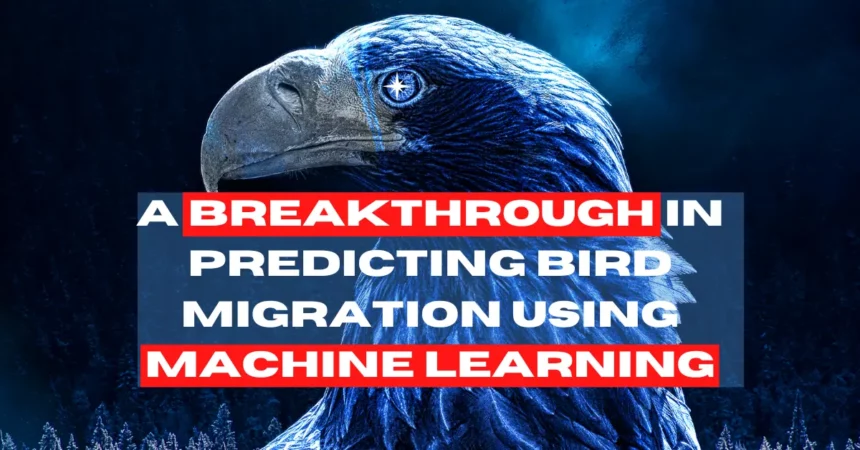Many bird species migrate large distances, and this movement plays a crucial role in their behaviour, survival, and reproduction. Understanding their migration patterns is essential for effective conservation, but traditional methods of tracking millions of birds are not feasible. Predicting bird migration using machine learning can help track these patterns, providing valuable insights into bird movements. However, using ringed or tagged birds with tracking devices is still limited by their high cost, weight, and intensive labour required.
However, there is a wealth of bird observation data provided by citizen scientists, such as the 200 million annual bird sightings recorded in the eBird project. It provides valuable data on bird presence but does not track individual bird migrations. In collaboration with computer scientists at the University of Massachusetts Amherst, the Cornell Lab of Ornithology has now developed a new predictive model called BirdFlow.
This model combines data from tagged and ringed birds with the bird observations provided by eBird, one of the world’s most significant biodiversity-related science projects, which holds over one billion bird observations from hundreds of thousands of users.
BirdFlow draws on the eBird database and uses a probabilistic machine-learning model to predict bird migration. The model is refined using real-time GPS and satellite tracking data to “learn” the migration patterns of individual birds.
The Previous method used for detecting birds activity, readers can check out this interesting article on Detection of Bird Activity Using Radar.
The researchers tested BirdFlow on 11 North American bird species and found that it outperforms other models in tracking bird migration and accurately predicts migration flows even without the real-time GPS and satellite tracking data. It makes it a valuable tool for tracking species other methods may not track.
Predicting bird migration using machine learning is a significant breakthrough in ornithology. The BirdFlow framework has the potential to boost insights gained from direct tracking studies and serve some practical applications in conservation, disease surveillance, aviation, and public outreach. The new model allows scientists to monitor bird movements and understand how they respond to environmental changes. The rapid decline of bird populations in recent years highlights the importance of utilising the latest technology to guide conservation action.
The BirdFlow model is still being perfected but should be available to scientists within the year and, eventually, to the general public. The researchers hope that the ability to predict bird migration using machine learning will play a significant role in conserving birds and their habitats. By uniting different data sources and painting a complete picture of bird movements, BirdFlow has exciting applications for conserving birds and preserving the environment.
More about AI:
- Ban on AI-powered ChatGPT for Students and Staff in Victoria
- AI-Powered Antibody Discovery for Cancer Treatment
- Improving Patient Experience with AI-powered ChatGPT in Healthcare
- Google vs OpenAI: The Battle for AI Dominance Begins









